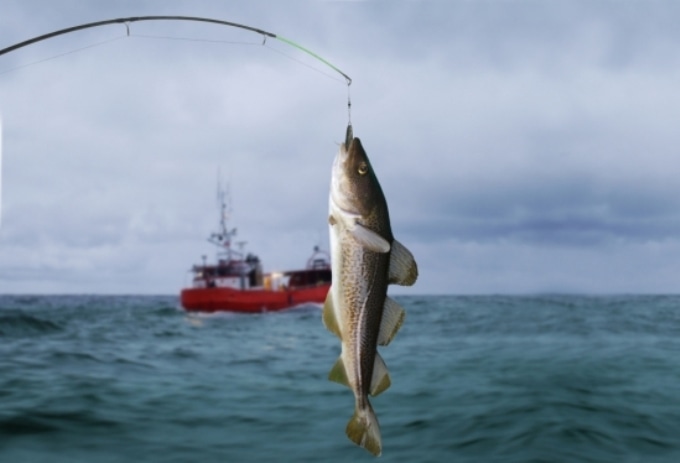Jul 28 2016
In recent decades, the plight of Atlantic cod off the coast of New England has been front-page news. Since the 1980s in particular, the once-seemingly inexhaustible stocks of Gadus morhua — one of the most important fisheries in North America — have declined dramatically.
 Cod has been an important economic commodity in international markets since the Viking period (around A.D. 800). (Credit: UCSB)
Cod has been an important economic commodity in international markets since the Viking period (around A.D. 800). (Credit: UCSB)
In 2008, a formal assessment forecasted that stocks would rebound, but by 2012, they were once again on the verge of collapse. Two years later, the National Oceanic and Atmospheric Administration instituted an unprecedented six-month closure of the entire Gulf of Maine cod fishery to allow stocks to recover.
While overfishing is one known culprit, a new study co-authored by researchers at UC Santa Barbara and Columbia University finds that the climatological phenomenon known as the North Atlantic Oscillation (NAO) is also a factor. And it contributes in a predictable way that may enable fishery managers to protect cod stocks from future collapse. The group’s findings appear in the journal PLOS ONE.
“In the 1980s, the North Atlantic was stuck in a positive phase of NAO,” said lead author Kyle Meng, an economist at UCSB’s Bren School of Environmental Science & Management. “We show not only that positive NAO conditions diminish a few consecutive cohorts of cod larvae but also that this effect follows a cohort as it matures.”
The NAO is a periodic climatic phenomenon that, like El Niño, causes changes in water temperatures, although the mechanism is different and the NAO affects the North Atlantic rather than the Pacific. Also like El Niño, the NAO may be affected in terms of both strength and frequency by climate change. The researchers found that, since 1980, NAO conditions have accounted for up to 17 percent of the decline in New England cod stocks.
“The Atlantic cod fishery has been the poster child of fishery science and challenges in the field,” said co-author Kimberly Oremus of Columbia University’s School of International and Public Affairs. “This study does something new in that we followed the effect of climate variability on cod throughout their life cycle. We also find evidence suggesting how — through fishing — human actions might be exacerbating the effect.”
As co-author Steve Gaines, a fish ecologist and the dean of UCSB’s Bren School, explained: “Fishery managers face big challenges in predicting how many new fish will come into the fishery each year. They use models to predict the average, but actual values vary wildly. Climate variation is one of the big challenges, especially if the recruitment forecasts turn out to be repeatedly too high, as we saw following NAO events. Then the mistakes compound and yields can be compromised for a long time.”
Because the cod stock is well defined over a large but specific area and has been studied extensively for more than a century, the researchers had access to abundant data. This enabled them to determine that warmer NAO conditions reduced cod larval recruitment by 17 percent, resulting in fewer young fish. They also found that while the NAO-induced population decrease persisted until the fish were 6 years old, it affected cod catch for up to two decades. That empirical link means that NAO can be used to predict the future size of the stock, which would allow for improved management.
“It would provide us with an early warning before the declines appear,” Meng said. “So we now know to expect that 17 percent drop in adult fish during a positive phase of NAO, which gives management enough time to adjust practices.”
“We’re not just saying that the climate is part of the problem; we’re showing how it can be used to forecast and respond in an appropriate and cheap way,” Gaines said. “Many papers show that cod are in bad shape and identify climate as part of the problem, but what they don’t do is give us a management solution.”
Gaines noted that fishery closures like the one in 2014 are controversial and hugely disruptive to fishing communities and local economies. “If we know the state of the NAO, managers can respond by reducing catch appropriately in the short term to avoid long-term closures,” he added.
“People haven’t applied these kinds of approaches to this problem previously,” Gaines continued. “Climate change may have costs for fisheries, but you don’t have to make bad choices that accentuate it for decades.”